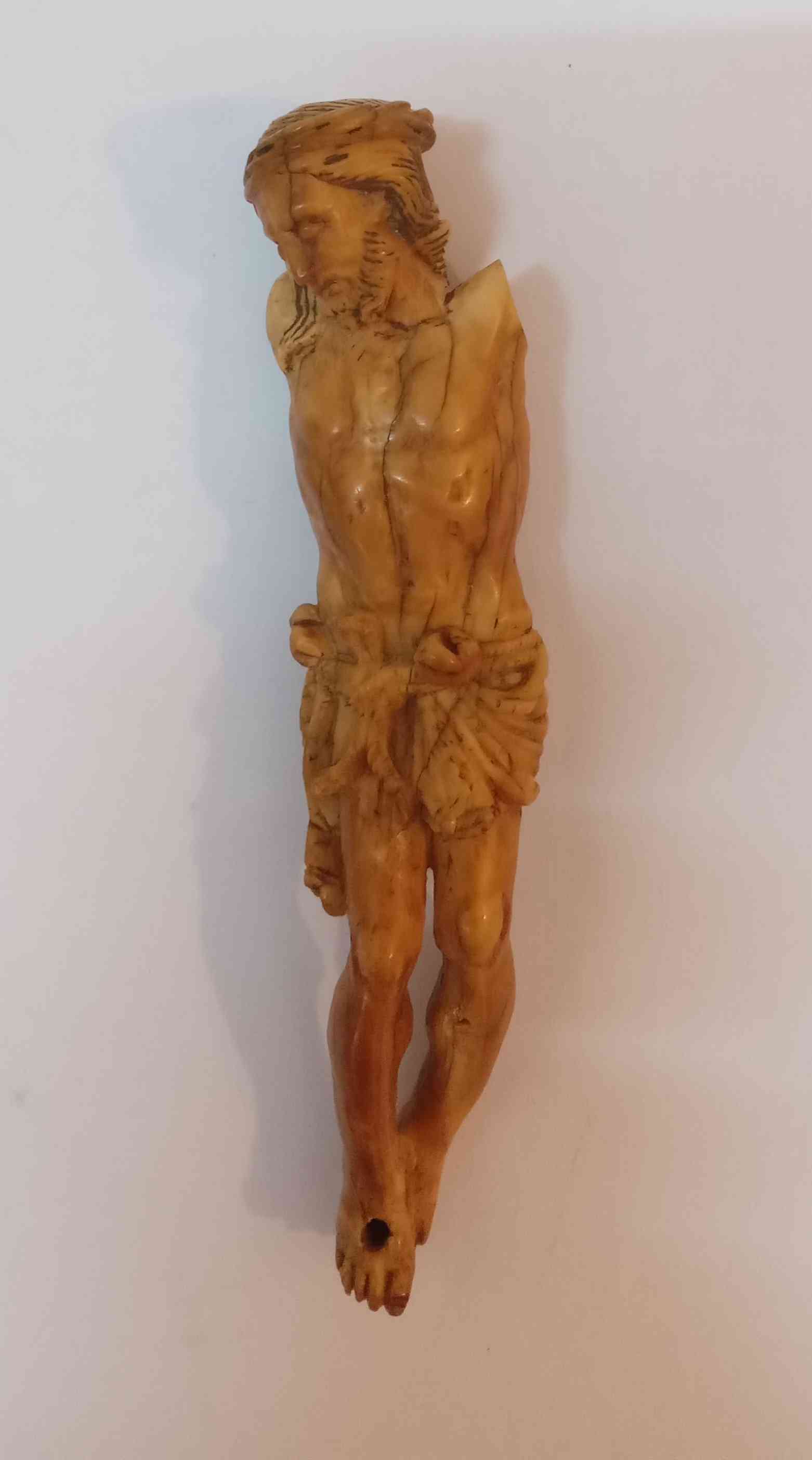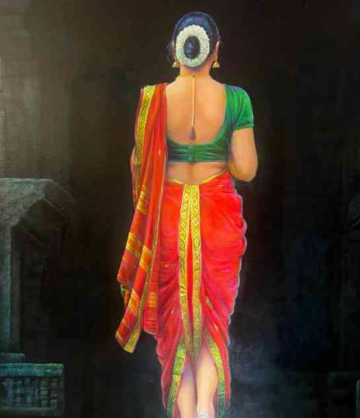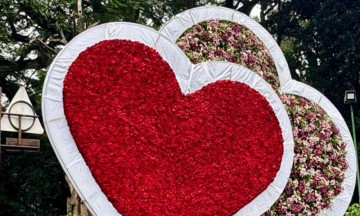The Solemnity of the Most Holy Body and Blood of Christ is also known as the Solemnity of Corpus Christi, which translates from Latin to "Body of Christ." This feast originated in France in the mid-thirteenth century and was extended to the whole Church by Pope Urban IV in 1264. This feast is celebrated on the Thursday following the Trinity Sunday or on the Sunday following that feast.
This feast calls us to focus on two manifestations of the Body of Christ, the Holy Eucharist, and the Church.
Corpus Christi
Object description: This Ivory image of the Corpus is seen to have a deep yellowish patina. The Corpus is represented as lifeless with His head bent forward towards His right with downcast eyes. This representation may be called 'Christus patients or the 'Suffering Christ'. The smooth rendering of the hair on His right shoulder, recalls its oriental influence. The facial features, the beard, and the tucked-in loincloth supported by a cord have been executed with fine detailing. The loincloth is seen to have a saw-toothed edge indicative of its age. The exposed rib cage expressively depicts Christ's intense suffering. Both the arms of this figure are missing.
Period: 17th Century https://www.facebook.com/IndoPortugueseArt?mibextid=ZbWKwL
Content & Picture credits: Frazer Andrade (Margão, Goa)
























